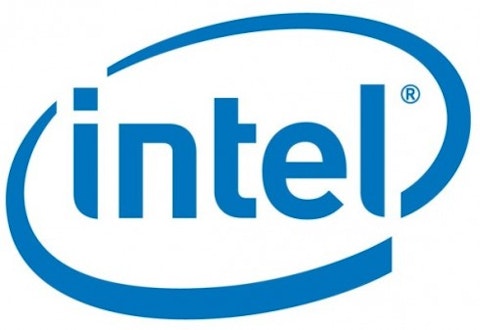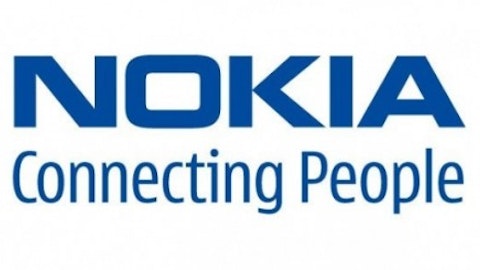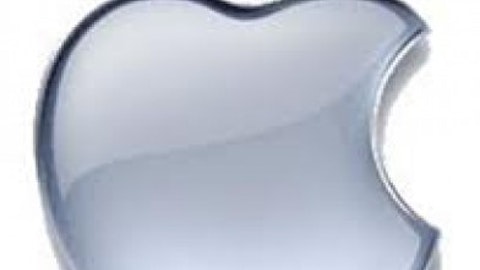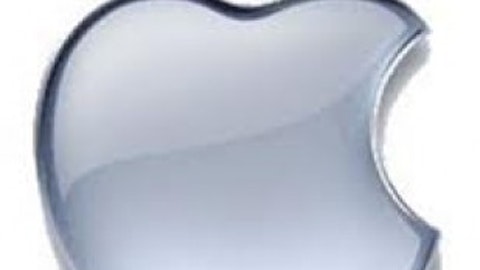Intel Corporation (NASDAQ:INTC) is in the sticky position of pursuing markets with falling gross margins, while its bread and butter PC business is experiencing short-run decay in demand. Long-term trends like cloud virtualization are reducing the demand for servers, as serve utilization is improving because the cost of running servers is being centralized by companies like International Business Machines Corp. (NYSE:IBM), Amazon.com, Inc. (NASDAQ:AMZN), and VMware, Inc. (NYSE:VMW).
Over time, I anticipate declining revenue growth from servers, modest to no growth in desktop and laptop processor shipments, with incremental growth in mobile processing.
Things aren’t that rosy
PiperJaffray analyst Gus Richard states:
We estimate that a system that uses a Silvermont processor will generate 1/5 to 1/2 the revenue for Intel than a Haswell processor. We think that this is the consequence of CPUs being ‘good enough’ and devices no longer driven by CPU performance. Moreover, we believe that the mobile and PC ecosystem are separate and distinct.
This could be potentially troublesome as Intel Corporation (NASDAQ:INTC)’s latest financial data reveals that a small decline in revenue means a substantial decrease in net income.

Source: Intel
Intel Corporation (NASDAQ:INTC)’s added revenue from mobile, even after partnering with Samsung, won’t be enough to move the needle on revenue growth. Samsung shipped 8.8 million units of its tablet in the first quarter, which would only generate about $176 million in revenue assuming $20 per chip, (Intel generated $12.5 billion in revenue in the first quarter). Intel’s mobile segment won’t be making any significant contributions to the company’s total growth anytime soon.
Mobile processors operate at extreme economies of scale, and unit volume composes a larger percentage of profit. If Intel isn’t able to price its mobile products at a level that’s similar to QUALCOMM, Inc. (NASDAQ:QCOM), Intel will not sell any units. Qualcomm’s Snapdragon chips costs $20 according to AllThingsD. So Intel’s profit margins are only going to shrink rather than expand in the post-PC -era. Intel shareholders may be sitting on their hands for a while before the company can turn in an awesome earnings season.
In the mobile space, it’s the down-stream suppliers like Apple Inc. (NASDAQ:AAPL), HTC, Microsoft Corporation (NASDAQ:MSFT), and Sony Corporation (ADR) (NYSE:SNE) that get to command higher profit margins. Mainly because they take on most of the risk, and are subject to changes in consumer buying habits, and have the most to manage in terms of pushing a product out onto the marketplace. Since Intel takes substantially less risk, its take-home profit isn’t going to be much. Qualcomm currently has 43% market share according to Strategy Analytics. The company generates $19.12 billion in revenue in its most recent fiscal year. Currently, Gus Richard forecasts Intel to generate $51.88 billion in revenue for fiscal year 2013. Intel Corporation (NASDAQ:INTC) would need to sell as many chips as Qualcomm in order to take in revenues that could off-set some of the decline in its PC, and server business. But because Qualcomm is a well-established competitor, I find it highly unlikely for Intel processors to dominate enough of the market.
As it stands, If Intel was to generate 25% of the unit volumes Qualcomm does, it would only contribute $5 billion in revenue to Intel. This assuming Intel gains 25% market share in both mobile processors, and mobile station modem. So it’s not very realistic to expect Intel’s mobile division to contribute much in terms of profit and revenue. Intel’s stock move was sentimentally driven rather than based on a change in the underlying fundamentals.
How to position
Don’t buy into the Intel Corporation (NASDAQ:INTC) mobile hype. While I understand that the company has a strong processor platform under Silvermont, the company would need to generate 25% of Qualcomm’s revenue in mobile in order to off-set the decline in PC, and server sales. If that is the case, Intel shareholders would be better served by investing into Apple.
I understand that Apple is exposed to many risks. But as it stands consumers want to buy Apple products. Apple customers remain loyal and have invested heavily into Apple app store purchases, and are likely to upgrade their previous iPhones into the next iPhone. This is driven by the fact that Apple devices are easier to upgrade, and you can bring your previous content collection of both programs, and songs to the next device using your Apple ID. This gives consumers the added incentive of owning an Apple device rather than an Android based device.
Apple trades at a fairly low earnings multiple, and projected to grow earnings growth because industry wide forecasts anticipate substantial growth in global shipments.
Some critics point to Apple’s decline in tablet market share as a good reason to sell the stock, but the decline in market share had to do with the average selling price of an Apple iPad being substantially higher than its competitors. Apple’s brand commands a higher premium, and, therefore, higher profit margins. The higher premium is what keeps the company at a 23.5% net profit margin.
Conclusion
Intel would need to sell a lot of processors in a short amount of time in order to garner revenues that could off-set the losses from falling PC and server shipments. Because of this, investors should be cautious of Intel Corporation (NASDAQ:INTC)’s outward looking guidance. Many of the high price-targets are driven by higher multiples on earnings. However, the only reason why investors would be willing to pay a higher multiple on earnings is if the company is growing earnings at a substantial rate. This is not going to be likely as Intel will be gaining market share against well-established competitors like Qualcomm and NVIDIA Corporation (NASDAQ:NVDA) over the course of 5-10 years. I expect Intel to gain market share incrementally, and this will disappoint shareholders who were hoping for a silver bullet.
Investors would generate higher investment yields by investing in companies further downstream like Sony, Microsoft, and Apple.
Alexander Cho has no position in any stocks mentioned. The Motley Fool recommends Apple and Intel. The Motley Fool owns shares of Apple, Intel, and Qualcomm.
The article Intel’s Mobile Strategy Needs Unprecedented Scale to Work originally appeared on Fool.com.
Copyright © 1995 – 2013 The Motley Fool, LLC. All rights reserved. The Motley Fool has a disclosure policy.






